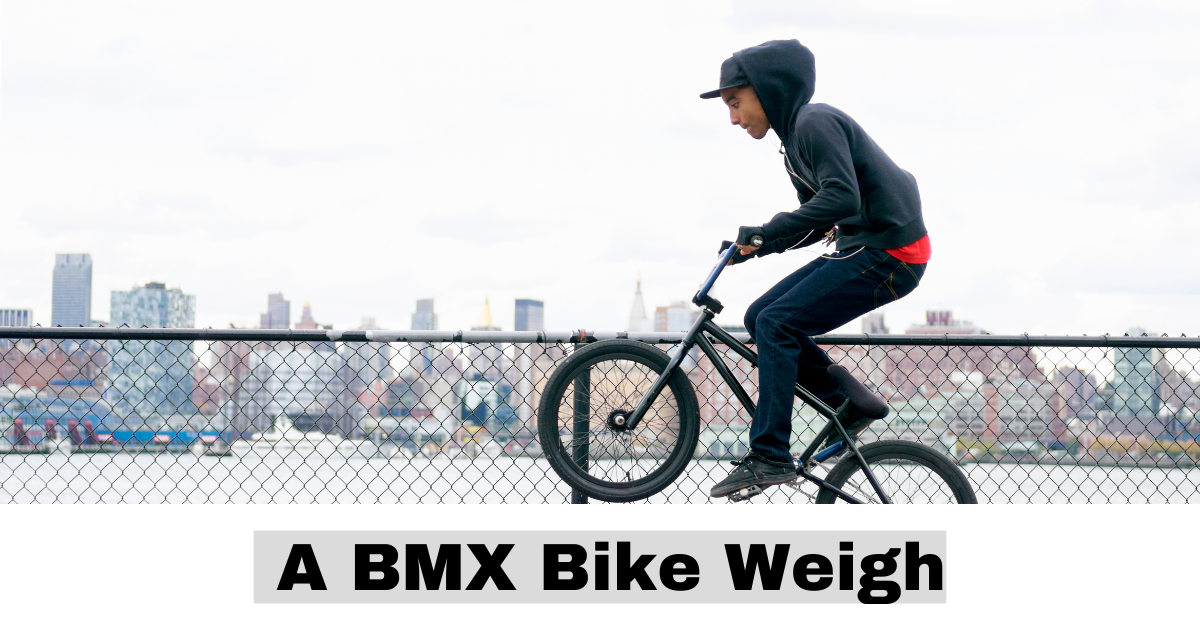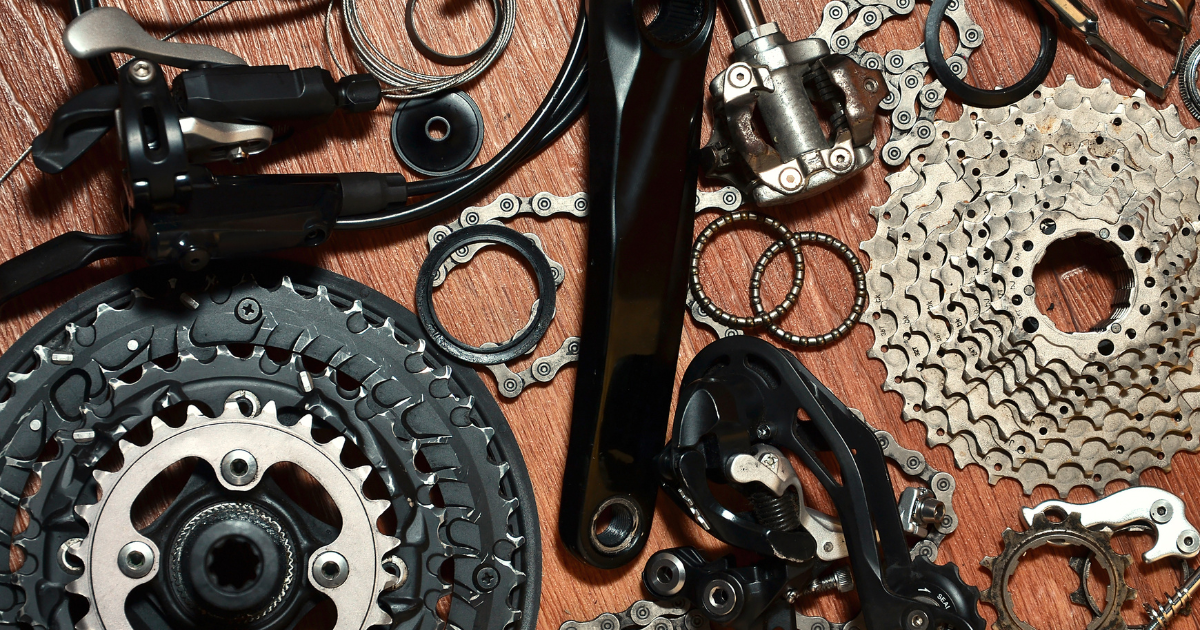Get ready to embark on an exhilarating adventure as we dive into the world of BMX bikes and their off-road capabilities. From tackling mountain terrains to maneuvering through trails, these agile machines are designed to conquer any terrain. So fasten your helmet and prepare for an adrenaline-fueled ride as we explore the thrilling world of off-road BMX biking!
If you’ve ever seen a BMX bike zooming through the streets, you might have wondered if these cool two-wheelers are suited for off-road adventures. Let’s put those doubts aside because BMX bikes can definitely handle wild terrain with ease!
BMX bikes are exceptional off-road performers due to their lightweight design. These bikes prioritize performance with smaller frames and compact components, allowing for excellent maneuverability on a variety of terrains. Whether it’s navigating narrow trails or effortlessly jumping over obstacles, BMX bikes provide unmatched agility.
BMX bikes have the added benefit of being incredibly sturdy. They are specifically designed to withstand the intense tricks and jumps often performed in skate parks, making them built tough for any challenge. This durability also translates seamlessly to off-road riding, where riders frequently encounter rocks, roots, and other uneven surfaces. With a BMX bike, you can trust that your reliable companion will handle whatever obstacles nature throws your way
But don’t just take our word for it – try riding a BMX bike yourself and experience the thrill firsthand! Feel the adrenaline as you navigate twisting dirt trails or conquer steep mountain paths. While they may not have all the advanced features of dedicated mountain bikes, such as suspension forks or gears, BMX bikes make up for it with pure exhilaration!
If you’re looking for an exciting outdoor adventure, why not take your BMX bike and explore those off-road trails like never before? Brace yourself for exhilarating thrills and non-stop fun as you challenge yourself to surpass previous limits. Get ready to redefine the meaning of off-road excitement with a high-flying ride on your own BMX bike!
What are the benefits of riding a BMX bike off road?
While BMX biking is often linked to skate parks and city settings, taking your bike off-road can provide a thrilling and rewarding experience.
Riding a BMX bike off road offers a sense of freedom that is hard to replicate elsewhere. Exploring nature and conquering various terrains on off-road trails provides an exhilarating experience, making it an ideal escape from the busy city life.
Off-road riding is not only thrilling but also a great way to enhance your riding skills. The uneven terrain, bumps, jumps, and tight corners present in off-road trails demand quick reflexes and precise control over your bike. These challenges help improve your balance, coordination, and overall biking skills.
Moreover, exploring off-road routes provides a chance to connect with fellow cycling enthusiasts who share your love for biking in scenic outdoor settings. You can join group rides or participate in organized races that are specially tailored for BMX bikes on dirt tracks.
In addition, riding off-road offers a fantastic cardiovascular workout that engages multiple muscle groups throughout your body. It helps improve stamina and builds strength in your legs, core muscles, arms, and shoulders.
Performance of BMX bikes on trails
BMX bikes are specifically engineered to handle rough trails and deliver an exhilarating off-road riding experience. Their performance on challenging terrains is truly impressive.
One of the key advantages of riding a BMX bike on trails is its exceptional agility. The compact design and small frame allow riders to easily maneuver through narrow passages, navigate around obstacles effortlessly, and maintain full control over uneven terrain.
Moreover, the lightweight design of BMX bikes enables riders to accelerate quickly and pedal efficiently on trails. This allows them to easily gain speed when necessary and effortlessly tackle challenging uphill sections.
In addition, BMX bikes are equipped with durable frames that are designed to withstand the challenges of off-road riding. They have been constructed to endure jumps, drops, and rough landings without compromising their structural integrity.
BMX bikes excel on trails due to their responsive handling. Riders have precise control over their movements, enabling them to make sharp turns and perform tricks with ease.
When it comes to performance on trails, BMX bikes shine. Their agility, lightweight construction, durability, and responsive handling capabilities make them perfect for tackling dirt paths or hitting jumps at a local trail park. If you’re looking to enhance your off-road adventures, a well-equipped BMX bike is the way to go!
Performance of BMX bikes on mountain terrains
When it comes to tackling mountain terrains, BMX bikes may not be the obvious choice. However, don’t underestimate their performance off-road! Despite lacking some features found in dedicated mountain bikes, BMX bikes offer unique advantages for navigating rugged trails.
A BMX bike excels in its maneuverability. The smaller frame and compact design enable riders to easily navigate tight corners and tackle technical sections on the trail. This agility grants the ability to swiftly change direction and skillfully maneuver around obstacles with precision.
Moreover, BMX bikes are specifically engineered for durability. They’re crafted to endure jumps, drops, and rough landings, making them perfect for tackling challenging mountain trails. The robust construction guarantees that these bikes can withstand the rigors of off-road riding while still maintaining top-tier performance.
Moreover, the straightforward design of a BMX bike can be advantageous when hitting the mountain trails. With fewer parts than a full-suspension mountain bike, there’s less need for maintenance. This translates to spending less time tinkering with your bike and more time relishing in the exhilaration of off-road adventures.
Although specialized mountain bike tires offer superior traction, traditional BMX tires still provide sufficient grip on a range of surfaces. Some riders opt to upgrade their tires for improved traction when venturing off-road with their BMX bikes.
Tips for riding a BMX bike off road
Choose the right tires:
If you plan on taking your BMX bike off road, it’s crucial to equip it with the appropriate tires that can handle different terrains. Opt for knobby or all-terrain tires that offer excellent traction and control.
2. Adjust your bike’s suspension:
While most BMX bikes do not come with suspension, if you plan on frequently riding off-road trails, it may be worth considering adding front suspension forks. These forks can help absorb shocks and bumps for a smoother ride.
3. Practice proper body position:
To navigate rough terrain more easily, it’s important to maintain a low center of gravity by bending your knees and keeping your weight centered over the bike. This will provide greater stability and control as you ride.
4. Learn how to bunny hop:
When riding off-road, mastering the skill of bunny hopping is crucial. This technique enables you to easily maneuver over obstacles like rocks and tree roots. To execute a bunny hop, simultaneously lift both wheels off the ground by pulling up on the handlebars while pushing down with your feet. Practice this until it becomes second nature.
5. Start with easier trails:
If you’re new to riding off-road, it’s recommended to start with trails that are beginner-friendly. This will help you gain confidence and improve your skills gradually before attempting more challenging routes.
6. Always wear protective gear:
When engaging in off-road riding, it’s important to prioritize safety. To protect yourself, it is highly recommended to wear a helmet, knee pads, elbow pads, and gloves. These safety measures will provide you with added protection against any unpredictable situations that
Don’t forget, the key to mastering off-road BMX biking is practice. As you spend more time on your bike and gain experience, you’ll become more proficient at tackling various terrains and embracing the exhilaration of off-road journeys!
Reasons Why BMX Bike Can Go Off Road
BMX bikes are not limited to skate parks and city streets. These versatile bicycles can also tackle off-road terrains effortlessly. Let’s explore a few reasons why BMX bikes excel in off-road riding:
Durability:
BMX bikes are designed to endure rough riding conditions. They feature robust frames, thick tires, and sturdy components that enable them to navigate the bumps and jumps encountered on off-road trails.
2. Maneuverability:
BMX bikes are designed to be compact with a shorter wheelbase, which gives them excellent maneuverability on narrow trails. Their smaller size enables riders to easily navigate tight paths and execute quick turns without any difficulty.
3. Lightweight:
BMX bikes are also favored for their lightweight design, which enhances maneuverability on rough terrain. This feature enables riders to effortlessly lift either the front or rear wheel to navigate obstacles like rocks or tree roots.
4. Versatility:
BMX bikes are not only great for tricks and stunts but also excel in other riding styles like dirt jumping and trail riding. Their responsive handling and strong construction make them perfect for tackling various types of terrain.
5. Extreme Sports Culture:
BMX biking is known for its vibrant extreme sports culture, where riders are constantly challenging themselves by exploring new and remote trails or venturing into mountainous terrain.
In recent times, numerous companies have created specialized models specifically tailored for trail riding or even mountain biking. If you’re seeking an exhilarating adventure away from the usual routes,
Don’t hesitate to take your trusty BMX bike out into nature’s playground!
Can I Ride BMX Bike On Road?
Many BMX bike enthusiasts often wonder if it’s permissible to ride their bikes on the road. The answer is yes, you can indeed ride a BMX bike on the road! However, it’s important to keep in mind that while it is possible, riding a BMX bike on the road may not be as comfortable or efficient compared to riding a traditional road bike.
BMX bikes are specially designed for off-road use, equipped with features like knobby tires and durable frames that allow riders to navigate rough terrains. However, when riding a BMX bike on the road, you may encounter challenges due to its small wheels and rigid frame. These factors can make it more difficult to maintain speed and maneuver through traffic.
Furthermore, BMX bikes don’t usually have gears or suspension systems like those found in mountain or hybrid bikes. As a result, riding long distances on paved roads can be more uncomfortable. Additionally, without different gear options, climbing steep hills may require more effort compared to other bike types.
Despite these limitations, many riders still enjoy taking their BMX bikes onto the streets. Riding a BMX bike on the road provides riders with the chance to practice tricks and stunts in urban settings, allowing them to demonstrate their skills beyond traditional skate parks.
If you choose to ride your BMX bike on the road, it’s important to prioritize safety. Before taking to the streets, ensure that your brakes are in proper working condition. Additionally, protecting yourself with helmets and pads is highly recommended to prevent injuries in case of any falls or accidents.
Difference Between the off-road and on road
When deciding to ride a BMX bike, you’ll need to choose whether you want to ride on-road or off-road. Each option provides its own unique riding experience and has distinct differences between them.
When riding on roads, it is usually in urban areas where cyclists navigate through streets, sidewalks, and designated bike lanes. The paved surfaces provide smooth terrain for faster speeds and easier maneuvering. This type of riding is ideal for those who enjoy leisurely rides around town or need to commute from one location to another.
Off-road riding, in contrast, entails exploring trails and mountainous terrain. It is a more daring and demanding type of riding since it involves navigating through uneven surfaces such as dirt, gravel, rocks, and roots. Off-road biking offers an exhilarating experience as riders conquer obstacles like jumps and drops.
BMX bikes are designed with different features to suit different terrains. On-road BMX bikes, for example, prioritize speed with their smooth tires and lightweight frames, allowing for quick acceleration. These bikes are perfect for navigating urban environments that require agility.
Off-road BMX bikes prioritize durability and traction, equipping wider tires with aggressive tread patterns for enhanced grip on loose surfaces like dirt or mud. They also feature stronger frames to withstand the impact of rough landings during jumps.
Choosing the right road for your riding preferences and skills ultimately comes down to personal choice. Some riders find enjoyment in navigating challenging mountain terrain, while others prefer the convenience of cruising through city streets.
When it comes to deciding between off-road or on-road riding, the choice ultimately depends on your personal preferences, goals, and resources. Whether you prefer sticking to one type of terrain or enjoy exploring both environments, what truly matters is finding joy in every ride.
Which Road Should I Ride On?
If you’re interested in riding a BMX bike off-road, you might be wondering where to ride. The answer depends on what kind of terrain you prefer and what suits your preferences.
For beginners or those new to off-road biking, it’s a good idea to start on well-maintained dirt trails or gravel paths. These types of routes offer a smoother surface compared to mountain trails and other rough terrains. This allows you to build confidence in handling your BMX bike off-road without encountering too many obstacles.
For experienced riders seeking more adrenaline and adventure, mountain biking provides the perfect opportunity. Navigating rugged terrain, steep climbs, and thrilling descents requires technical skills and agility. It’s crucial to prioritize safety by wearing appropriate gear and exercising caution due to the higher risks involved in mountain biking.
When it comes to riding your BMX bike off-road, the right road choice depends on your skill level and personal preference. Whether you prefer cruising along dirt trails or conquering rugged mountainsides, remember to prioritize safety while enjoying the exhilarating experience of off-road biking!
Converting a BMX bike for off-road terrains
Transforming a BMX bike into an off-road beast is a thrilling project that can unlock endless riding opportunities. Although BMX bikes are originally designed for skate parks and performing tricks, with some adjustments, they can easily handle rugged terrains.
To transform your BMX bike into an off-road machine, start by upgrading the tires. The standard tires that come with a BMX bike aren’t suited for navigating rough and uneven terrain. Instead, opt for wider tires with aggressive tread patterns that offer superior traction and stability on dirt trails or mountainous landscapes.
Adding front suspension forks is another crucial modification that should be considered. This addition will greatly improve the bike’s performance by enhancing control and comfort, particularly when riding on rough or uneven terrain. The front suspension forks are designed to absorb shocks and bumps, providing a smoother and more enjoyable off-road experience.
To enhance your converted BMX bike, it is advisable to consider upgrading the tires and adding front suspension forks. Another recommendation is installing disc brakes instead of rim brakes. Disc brakes provide superior stopping power, especially when riding at higher speeds on unpredictable off-road terrains.
Additionally, you can make pedaling uphill easier while still maintaining control over different terrains by adjusting the gear ratio. This can be done by installing a larger rear cog or a smaller chainring.
When exploring more difficult off-road environments, it’s important to remember the necessity of personal protective equipment. Helmets, knee pads, elbow pads, and gloves are all essential for ensuring safety should always be given top priority.
Transforming your BMX bike for off-road adventures can be a worthwhile investment of both time and money. By doing so, you’ll unlock countless opportunities to experience thrilling adventures beyond the confines of traditional skate parks. So why limit yourself? Embrace the versatility of your BMX bike and embark on exciting journeys through nature’s playground!
How to Convert A BMX Bike to Suit Off Road Use?
If you want to take your BMX bike off-road, there are a few modifications you can make to improve its performance on rough terrain. Here are some helpful tips for converting your BMX bike into a capable off-road machine!
If you’re planning to tackle off-road trails, it might be worth considering upgrading your tires. They play a crucial role in providing traction and grip on different types of terrain. Opting for wider knobby tires can significantly improve stability and control while riding.
Consider adding suspension forks to your bike. These forks are designed to absorb impact from bumps and uneven surfaces, resulting in a smoother and more comfortable ride. They also enhance handling by allowing the front wheel to move independently.
To enhance your off-roading experience, it is recommended to install a lower gear ratio. This will prove beneficial when traversing steep inclines and navigating rough terrain. Lower gears facilitate easier pedaling while providing improved control over challenging obstacles.
Another upgrade you can consider is installing disc brakes. Disc brakes offer better stopping power compared to standard rim brakes, especially in challenging conditions like mud or rain where reliable braking performance is essential.
Remember to prioritize your safety! Off-roading can be unpredictable, and accidents are always a possibility. To ensure your protection, make sure to invest in high-quality protective gear such as helmets, knee pads, elbow pads, and gloves. This will help keep you safe during all of your exciting off-road adventures.
With some adjustments to your BMX bike, you can confidently navigate off-road trails and enhance your riding experience. However, it’s essential to prioritize safety when modifying or riding any bicycle off-road.
Is It Legal To Ride A BMX Bike On A Trail?
Many people wonder if it’s legal to ride BMX bikes off-road on trails. The answer to this question can vary depending on the specific trail and local regulations.
In most cases, BMX bikes are not permitted on hiking or walking trails. This is because their narrow width could potentially cause damage. However, there are designated mountain biking trails where BMX bikes are allowed. These trails are specifically designed for off-road cycling and offer a safe environment for riders.
It’s crucial to consult with local authorities or trail managers before riding your BMX bike on any trail. They can provide you with all the necessary information about the rules and regulations that apply in your area.
Furthermore, it is crucial to show respect for other users of the trail, even if riding a BMX bike is permitted. This involves giving right of way, being conscious of speed, and avoiding any unnecessary damage or disruption.
To ensure your off-road BMX bike adventures are both enjoyable and legal, it’s important to follow these guidelines and respect the rules established by local authorities. Always prioritize safety!
Conclusion: BMX bikes go off road
BMX bikes are versatile and can be taken off-road, providing an exciting experience for riders who want to discover trails and mountain terrains. Although they may not be specifically built for off-road use, BMX bikes possess certain features that make them well-suited for this type of riding.
Riding a BMX bike off road offers numerous advantages, with agility and maneuverability being key benefits. The compact frame, lightweight construction, and small wheels enable riders to easily navigate through tight spaces, overcome obstacles effortlessly, and showcase their skills on various terrains.
BMX bikes excel on trails thanks to their agile handling and quick maneuverability. Riders can experience the excitement of jumps, berms, and challenging sections, all while pushing their skills to new levels.
When it comes to riding through mountain terrains, BMX bikes may have some limitations compared to dedicated mountain bikes. One of the main challenges is the lack of suspension systems, which can make rough descents more difficult and less comfortable. However, skilled riders can still conquer moderate downhill sections by using techniques like absorbing impact with their legs or choosing smoother lines.
If you’re thinking about using your BMX bike for off-road riding or converting it for that purpose, here are some tips to keep in mind:
Choose appropriate tires:
Opt for knobby tires with good traction that can handle different surfaces encountered off road.
2. Adjust tire pressure:
Lowering tire pressure slightly helps improve grip on loose terrain while providing additional cushioning.
3. Upgrade components if needed:
Consider adding features such as a front brake or thicker grips based on the specific requirements of your chosen trail or terrain.
4. Ride within legal boundaries:
It’s important to be aware of the local regulations regarding off-road BMX biking to avoid trespassing or causing damage to natural areas.
Although it is possible to modify a BMX bike for off-road use with the appropriate modifications mentioned above, it is important to be aware of its limitations when tackling more difficult trails. Purpose-built mountain bikes are better suited for these types of challenges.





